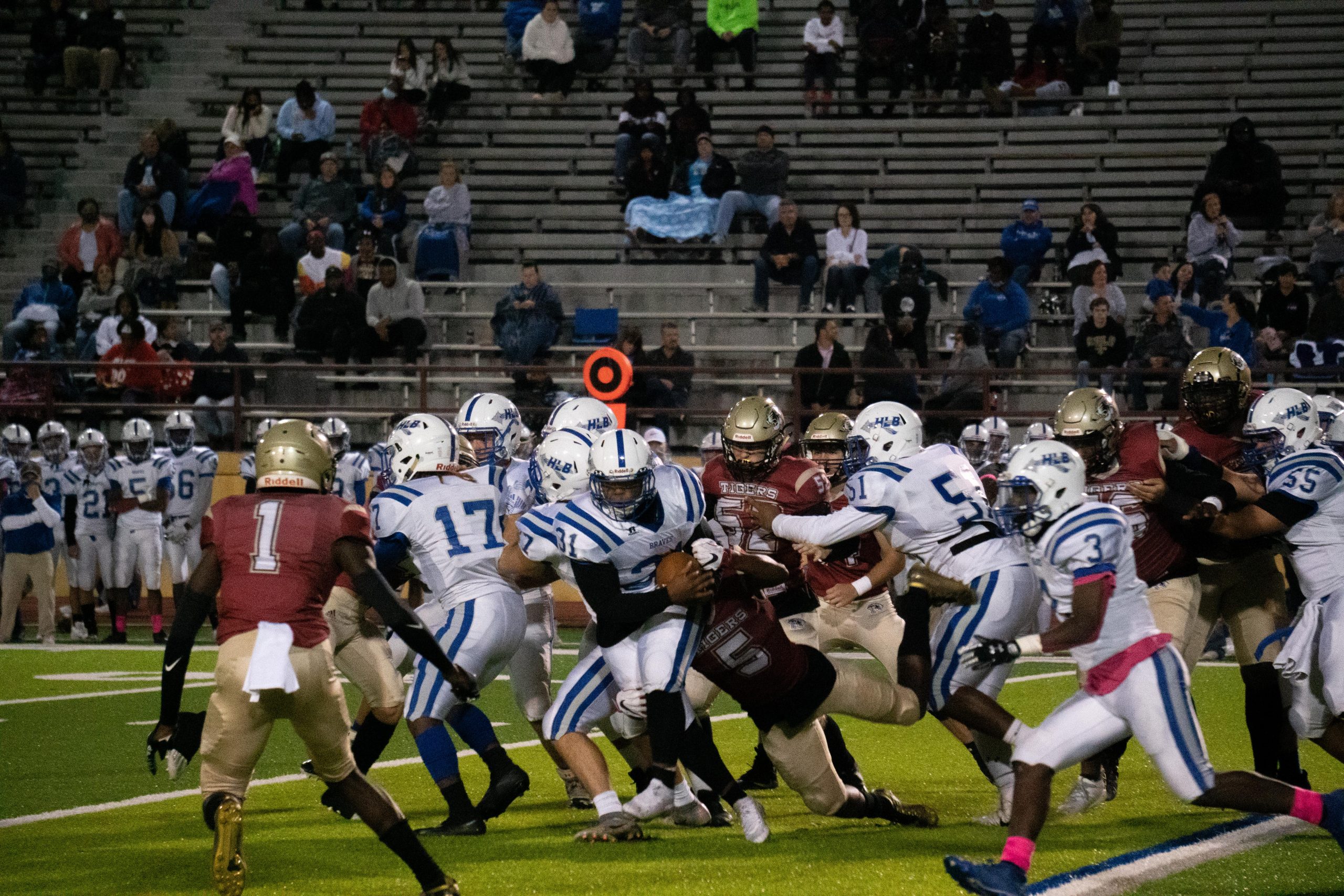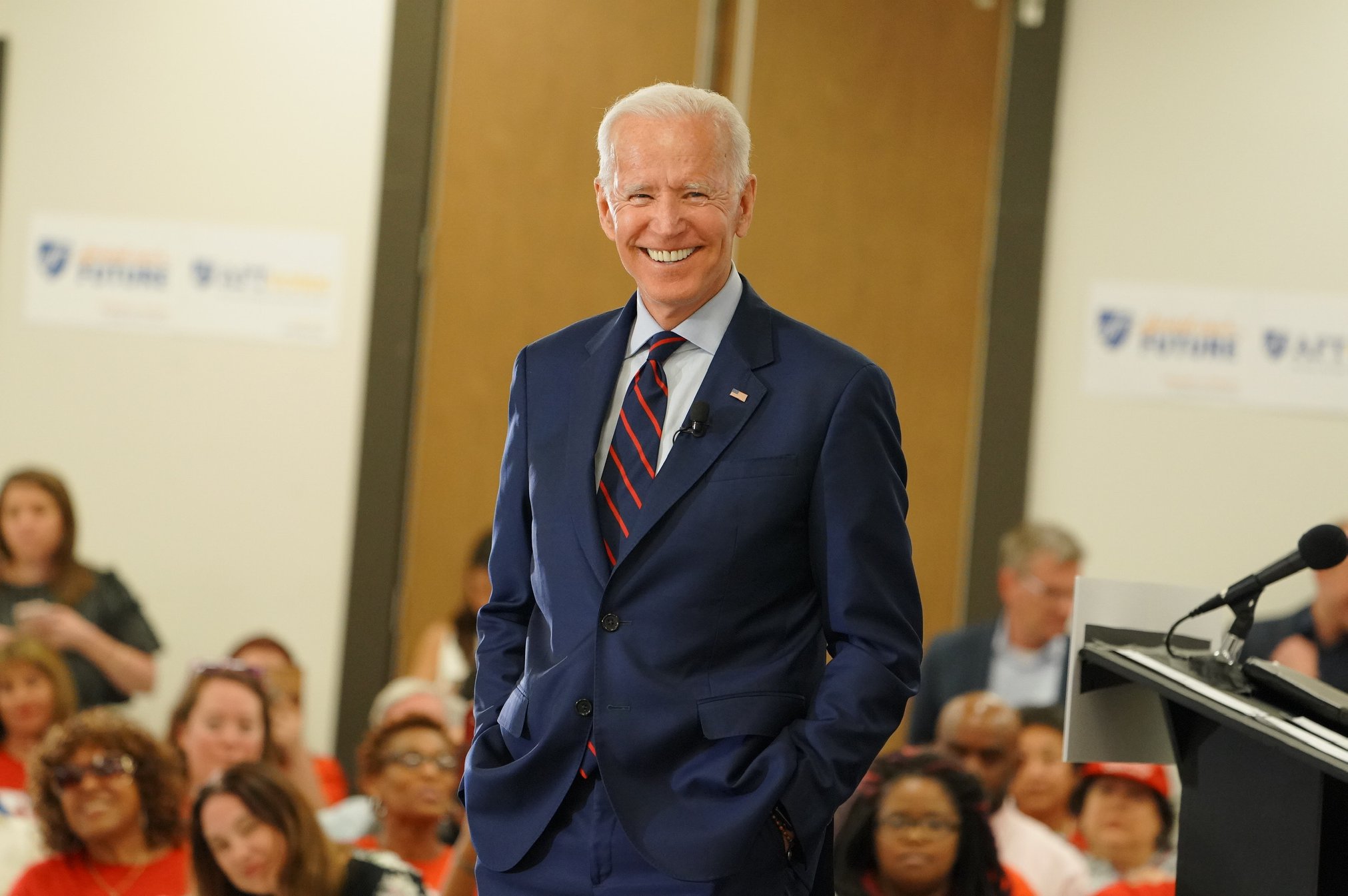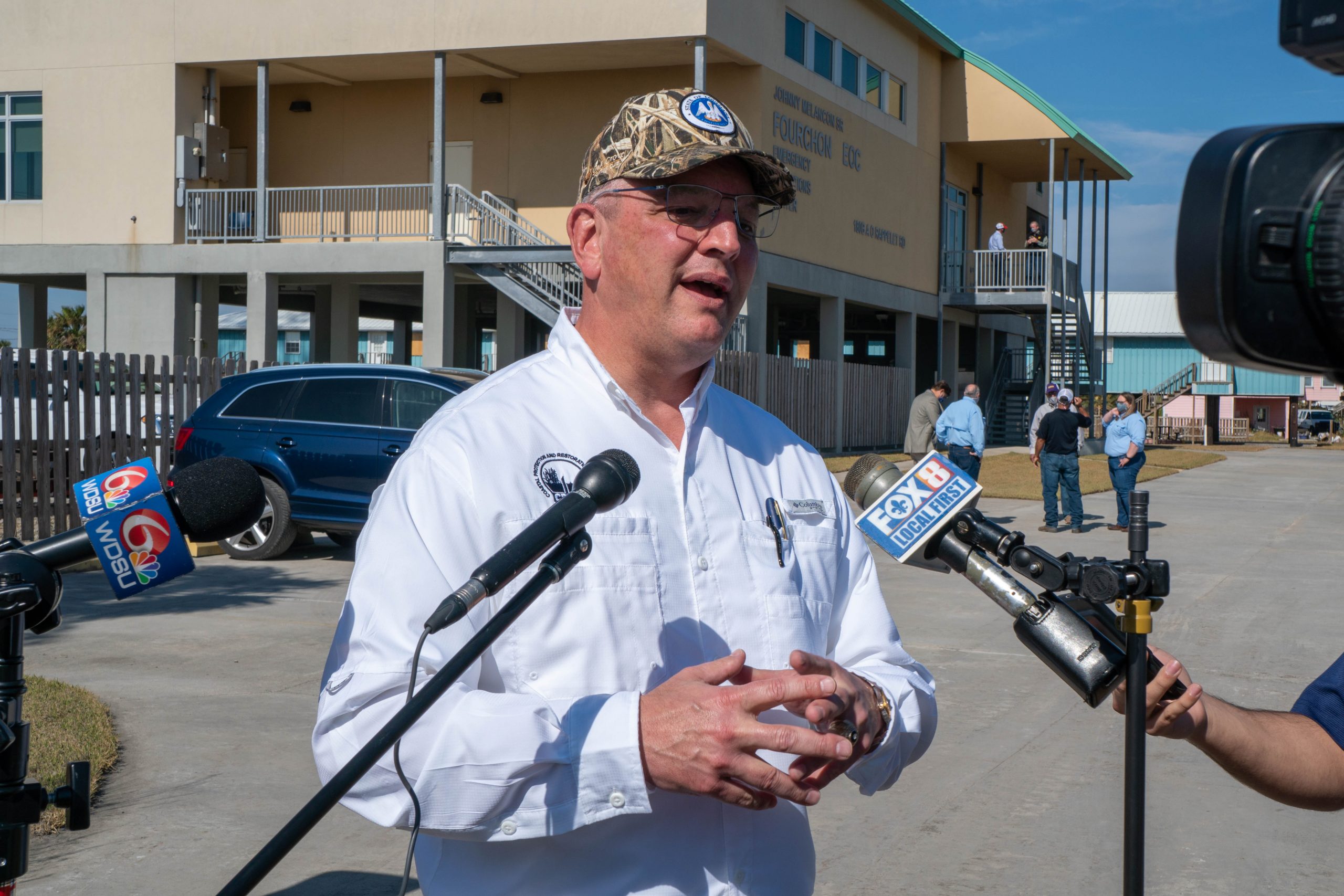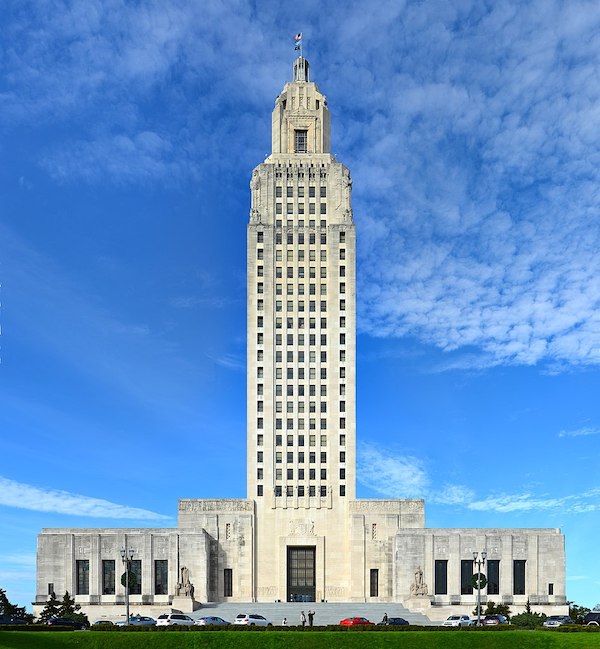
Friday Night Lights Scoreboard: Week 6
November 7, 2020
Joe Biden elected United States President, according to AP
November 7, 2020Governor John Bel Edwards visited Port Fourchon on Friday to meet with local officials and assess the damage at one of the areas Hurricane Zeta hit the hardest.
“…There’s no substitute for being on the ground and seeing things with your own eyes and having that personal interaction with folks so they can explain to you not just what you’re seeing but what all the consequences and the implications of the damage that will present problems for some period of time,” said Edwards after returning from a boat tour with Lafourche, U.S. Army Corps of Engineers and Louisiana Coastal Protection and Restoration Authority (CPRA) officials to survey the area.
Zeta made landfall near Cocodrie last Wednesday as a powerful Category 2, with reported sustained winds of around 110 mph and gusts around 136 mph. Zeta impacted the southern regions of Lafourche, Terrebonne and Jefferson parishes the most, ripping off roofs and toppling homes while also dragging down utility poles to leave thousands of residents without power in several areas.
“I know that power restoration has happened across the state and they’re well above 90 percent in the overall restoration,” Edwards said. “There are certain pockets that are more difficult than others because of the severity of the damage to the infrastructure, Port Fourchon happens to be one of those areas.”
As noted by the governor, many electric utility crews could be seen along La. Highway 1 and other areas of South Lafourche on Friday afternoon as they worked to fully restore the power there.
Chett Chiasson, Executive Director of the Greater Lafourche Port Commission, said the Port Fourchon should have full power by either the weekend or early next week. He also noted that the port has been fully operational since last Saturday due to backup generators.
Lafourche Parish President Archie Chaisson said the parish still has about 200 residents without power, mainly in isolated areas in the Golden Meadow area that bigger trucks can’t reach. He said they were aiming to have 100 percent power by the end of the weekend.
With five named storms making landfall in Louisiana, the 2020 Hurricane Season certainly left its mark — and it’s not over yet, with Tropical Depression Eta creeping more into the Gulf of Mexico. When asked if he could recall a season that’s similar to this year’s, Edwards recounted 2005, which saw Hurricane Katrina and not even a month later, Hurricane Rita. He also noted that in the years to follow, hurricanes Gustav and Ike struck the state as well.
“We are no strangers to this,” he added. “And the people of Louisiana have proven themselves to be resilient time after time.”
The governor also highlighted the strides made in flood protection since those aforementioned storms.
“The difference we’re having now is quite frankly, we’re benefiting from all of the infrastructure investments that have been made — whether it’s hurricane risk reduction system in the Greater New Orleans areas, the levees here in Lafourche Parish but also across Terrebonne Parish, but also the improvements made in Jefferson around Lafitte, but also improvements in Plaquemines,” he said. “There’s not much we can do for the wind other than making sure new construction occurs in accordance with the code… But what we’re seeing is that the infrastructure is really paying off and the focus now has to be on delivering the additional infrastructure enhancements that we have planned.”
One such future enhancement is the raising of La. Highway 1, the pivotal road that transports resources to and from Port Fourchon. The highway is prone to becoming inundated with heavier storm events. Although a date for the groundbreaking hasn’t been set yet, Edwards said money for the project has been secured.
Another project officials are putting their efforts toward is the restoration of the barrier islands, known as Louisiana’s first line of defense against storms.
Chip Kline, Chairman of the Louisiana Coastal Protection and Restoration Authority (CPRA) Board, said Zeta did cause some damage to the active construction site on West Belle Pass Barrier Headland, which helps protect interior marshes and the Port Fourchon area. A portion of the new sand had washed off during the storm, which will cause a delay in completing its restoration, he said.
However, he noted, contractors will begin projects on the other nearby two barrier islands while the damage on West Belle is being assessed.
Another area of concern is Grand Isle, which received extensive damage from Zeta, including breaches in its “burrito levee.” As Eta looms, Kline said, the CPRA is working with the Corps of Engineers to see what actions need to be in place now.
“We need a little breathing space to make some immediate emergency repairs, and then we’re gonna move forward with more strengthening of all of these levees that have been protecting people so well,” Edwards said.
Once the projects scheduled to start under his current term are complete, Louisiana will be generating more land than its losing, Edwards said. The governor also noted that the restoration projects already completed show that they do add protection in addition to improving the ecosystem.
Local and state officials have all expressed satisfaction in regard to the enhanced storm protection systems.
“I am amazed at just how few structures inside protected areas have taken on the water with all the hurricanes that we’ve experienced here over the last several years. I can tell you that 10 or 15 years ago, it just wouldn’t have been the case,” Edwards said.
“And so what I’m really doing is thanking the people of Lafourche Parish, of Terrebonne Parish, all over coastal Louisiana for the efforts that they have made — with their own tax dollars in conjunction with that from the state and some help in instances from the federal government as well — to really increase the resiliency,” he continued. “It’s paying dividends, and we need to continue that.”











